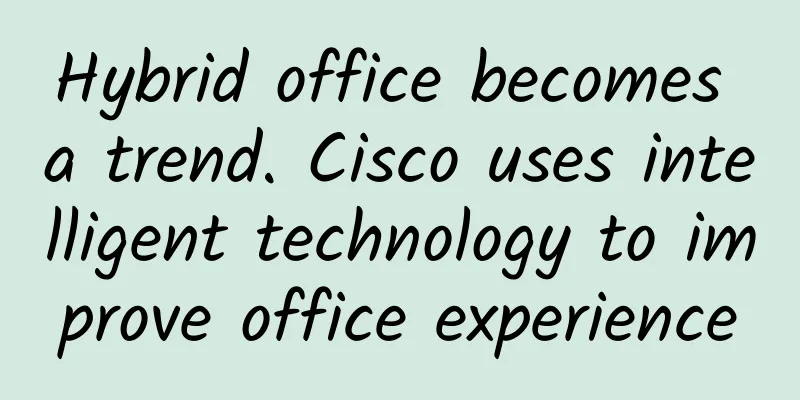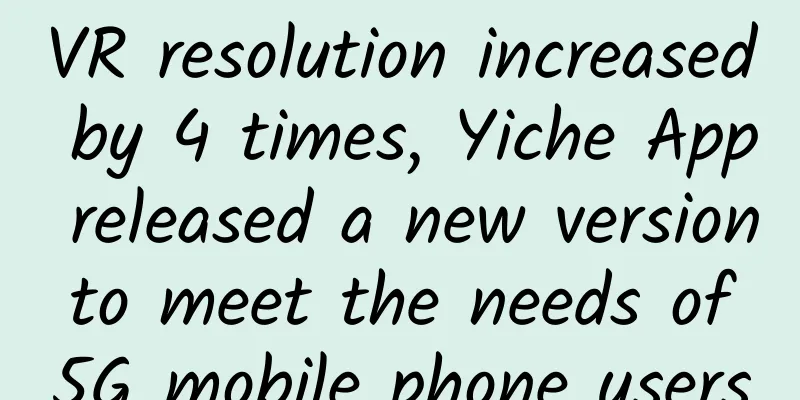Hybrid office becomes a trend. Cisco uses intelligent technology to improve office experience

|
According to the survey results of Cisco and a third-party research company in 2021, 84% of the thousands of companies surveyed have adopted a hybrid office strategy. Under the premise of complying with the policies of various countries, users can work normally and enterprises can operate normally, and business needs can be met in a variety of ways. In a hybrid office environment, enterprises will still face various challenges. How to help enterprises start hybrid office efficiently and improve employee work efficiency? Recently, Hou Shengli, Vice President of Cisco Greater China and General Manager of Cisco Pre-sales Engineer Team, said that hybrid office is a cross-technology and cross-platform demand. Cisco will meet customer collaboration needs from all angles, including collaboration, as well as different technical fields such as infrastructure network, security, and applications. Hou Shengli, Vice President of Cisco Greater China and General Manager of Cisco Pre-sales Engineer Team Hybrid office becomes a trend. Cisco's three-layer solution helps human-machine collaboration In recent years, people's working methods have undergone a revolutionary change, and hybrid office has gradually become one of the important trends. In Hou Shengli's view, hybrid office is not a simple video conference. First of all, enterprises need a network architecture. Whether in the office, at home, or in a mobile location, a network architecture is needed to connect the business platform, and the network architecture is required to be dynamic. Therefore, ensuring the connectivity and security of the network is the first priority; the second is the collaborative terminal, which guarantees the collaborative office needs of employees through related equipment; the third is to consider which applications run on the public cloud or private cloud, how to build a business platform, and realize hybrid office. To this end, Cisco launched a comprehensive hybrid office solution, which is not just about collaboration, but meets all the processes required by the current business of enterprises. According to reports, Cisco's hybrid office solution is divided into three levels: the first is the basic requirements, enterprises need stable transmission, smooth collaboration and secure access. On this basis are some enhanced scenarios, such as personal office space, home office, shared office space, cloud documents, etc. Going further, IT and OT are hybrid operated, including industrial asset and equipment management, smart buildings, and collaboration centers. Hou Shengli said that hybrid office has evolved from ubiquitous work to focusing on information value, and then to achieving mainstream human-machine collaboration, helping customers better realize hybrid office through a progressive approach. Cisco's strategic focus is to help customers achieve the interconnection, security protection and automation of all things in a cloud-first world, and to accelerate the creation of agile and flexible digital capabilities for customers. Hybrid office is part of the digital transformation of enterprises, and Cisco hopes to become a partner in the digital transformation of customers. "We hope to launch products that are not isolated hardware and software, but have a variety of application scenarios to help customers solve practical problems in work and production and meet customer needs." Multi-platform integration meets enterprise hybrid office needs As more and more companies adopt hybrid office models, multiple collaborative office platforms have emerged on the market. We may use different collaborative platforms in different work scenarios. However, the major platforms do not support each other, so we need to install multiple collaborative platform software on computers and smart devices to ensure the smooth development of collaborative office. Hou Shengli introduced that Cisco has fully considered the needs and challenges of customers since the beginning of the epidemic. Now, when Cisco devices are delivered to customers, they already support multi-platform interoperability and intercommunication by default. Taking devices as an example, on the menu of Cisco terminal devices, in addition to Cisco's own devices, there are buttons for some popular video conferencing platforms on the market. Customers only need to click a button to join the meeting they want to join, which is a good experience. To this end, Cisco has also made new releases in terms of products and solutions. Cisco announced a partnership with Microsoft to natively support Microsoft Teams on Cisco video conferencing terminals. The R&D teams of both parties have jointly innovated, and all devices, from large conference rooms to small conference rooms to personal desktops, are provided by Cisco with hardware and natively support Microsoft Teams applications. Both parties are working intensively on research and development, and it is expected that in the first quarter of 2023, there will be related conference room terminals that natively support Teams applications. In mid-2023, personal desktop devices and electronic doorplate devices for conference rooms will also be recommended to customers. It is understood that Cisco not only supports international hybrid office platforms, but also supports mainstream domestic collaborative office platforms. Hou Shengli said that Cisco is actively embracing the third-party cloud platforms that are currently very popular in mainland China, and has completed the compatibility certification of all mainstream domestic cloud platforms to meet customers' demands for one device to support multiple meetings and meetings on multiple platforms. Using smart technology to improve office experience In the future, flexible working methods will definitely continue for a long time and will be more closely integrated into life. Cisco will use new technologies to help customers solve various challenges encountered in working from home, mobile office, and corporate offices. Therefore, at the WebexOne 2022 conference, Cisco released a series of innovations, from globally designed working environments, to various flexible office modes, to Cisco's various innovative terminals, as well as security and management systems, to meet the diverse needs of customers. In terms of work environment, Cisco believes that there are six main places, including conference rooms, shared office spaces, mobile workstations, home offices, home public spaces, and anywhere. Through the combination of Cisco products and technologies, the office needs of each place can be met. In a hybrid office environment, noise is a problem that bothers everyone. To this end, Cisco Webex launched the "AI Audio" technology, which can eliminate noise in the environment through the "noise cancellation" function, making the voices of employees clearer. In addition, the "AI Audio" technology can not only eliminate background noise, but also remove background sounds that are not spoken by oneself, bringing a better meeting experience through AI technology. Whether you are meeting in a noisy public place such as a cafe or airport, or working from home with a family member using a hair dryer or vacuum cleaner, or a child playing around, or even in the office with a colleague on the phone, all distractions can be eliminated with one click through Webex's "AI Audio" technology, allowing users to concentrate on the meeting without being affected by the external environment. In terms of video, Cisco hardware terminals are also embedded with smart lens technology, so you can enjoy voice tracking during meetings. In short, whoever is speaking will be featured in a close-up. If there are three people sitting in the room, three people will be captured; if there are four people sitting in the room, four people will be captured, and so on. In addition, Cisco has also incorporated a new lens technology, the "People Focus" function, which allows everyone in the room to have a close-up. During the meeting, the size of the room, or the interference caused by the room area, can be completely ignored, and all attention can be focused on the portrait. The close-up picture of the person can also be adjusted accordingly according to the increase or decrease of the number of people in the picture. In terms of wireless screen sharing, Cisco Webex supports any third-party conferencing software and is not restricted by terminal devices. For end users, whether they are using Android devices, Apple phones, computers, or Windows PCs, Cisco Webex can support users to use any of their own devices to achieve wireless screen sharing. Are these technologies only applicable to Webex Meetings? Hou Shengli said that when joining any third-party conference through Cisco terminals, Cisco's artificial intelligence-related technologies can also be used to implement intelligent functions in audio and video to ensure the user experience. In terms of hardware equipment, Cisco has various solutions for customers' workspaces in different locations. Whether in the office, at home or anywhere else, Cisco Webex equipment continues the consistency of Cisco experience, allowing customers to focus on collaboration itself and communicating with others without having to pay attention to the equipment, the complexity of operation or the tedious maintenance of the equipment. Conclusion With the advent of the post-epidemic era, hybrid office mode has become more common. No matter where we are, we can start the office mode at any time. This not only relies on hardware equipment, but also on software applications. The ability to meet the collaborative office needs of multiple application software through one device is believed to be the biggest demand of many corporate employees. "Think what users think, think what enterprises think", Cisco has been insightful about the transformation needs of enterprises, and through a full range of hardware equipment and software solutions, it helps enterprises accelerate the digital transformation process and achieve business innovation. |
<<: Understand the OSI model in five minutes
>>: Sub-band full-duplex, a compromise for the 5G dream?
Recommend
Megalayer: 20% off on Hong Kong Alibaba hybrid servers - E3-1230/8GB/240G SSD/10M omnidirectional + 10M Alibaba Cloud bandwidth starting from RMB 638/month
This month, Megalayer provides Hong Kong Alibaba ...
Why did Facebook insist on changing its name when it was clearly taboo? Two reasons for the change
Facebook changed its name to Meta, causing its st...
spinservers: Mid-Autumn Festival promotion, VPS 60% off 2G memory package from $5.6/month, dual E5+256G memory dedicated server from $199/month
spinservers launched a special promotion during t...
[Closed] NextArray: $1.99/month KVM-1GB/10GB/1TB/Portland Data Center
[Closed] NextArray has added three new US nodes th...
iONcloud 10% off in April, San Jose/Los Angeles/Honolulu/Dallas data centers
iONcloud is a cloud hosting platform established ...
How will 5G impact the video surveillance and physical security industries?
[[407162]] It’s been a few years, but 5G (fifth g...
China successfully launches the world's first quantum satellite "Micius"
At 01:40 on August 16, China successfully launche...
Seven requirements for next-generation edge networks
Enterprises that have embarked on digital transfo...
There are two important factors that affect network speed: network bandwidth and network latency!
With the popularization of the Internet, users pa...
Interviewer: Can you tell me about the release process of WeChat Mini Programs?
[[431428]] This article is reprinted from the WeC...
On-Prem vs. Colocation vs. Cloud vs. Edge: Pros and Cons
In today's digital economy, technology has be...
How to build a faster fiber optic network infrastructure?
Fiber optic network infrastructure is the backbon...
Use Qt to create your own serial port debugging assistant
[[376484]] In my work, the thing I deal with most...
What will happen when 5G network falls in love with public cloud?
[[410935]] Recently, AT&T, the second largest...
Explain the five major network concepts in a vivid and interesting way
The update of 5G technology has promoted the deve...









